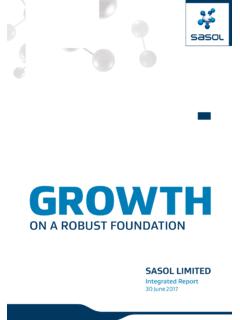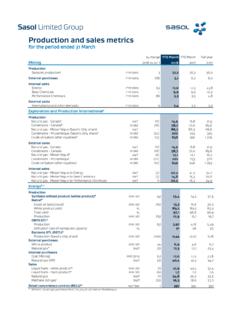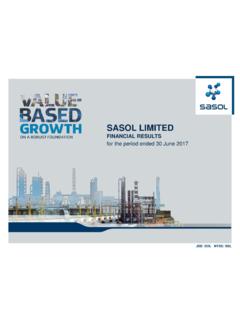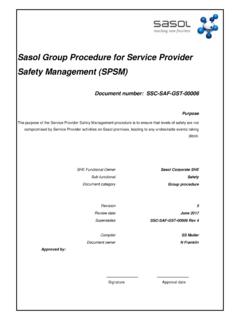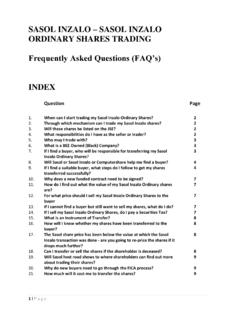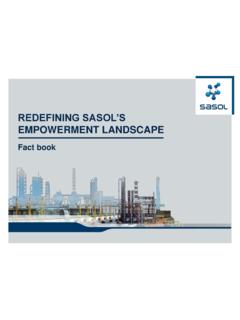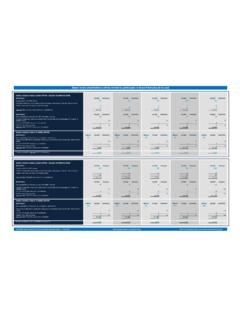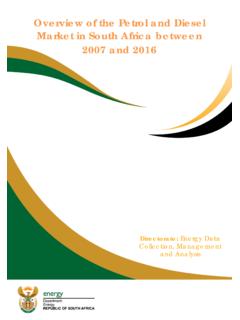Transcription of SASOL AND CLIMATE CHANGE
1 SASOL AND CLIMATE CHANGE We recognise that we have a responsibility and opportunity to contribute to finding solutions to the policy and physical implications of CLIMATE CHANGE . SASOL supports an international agreement that defines how countries will share efforts to reduce greenhouse gas (GHG) emissions, in line with the principle of common but differentiated responsibilities. Bongani Nqwababa | Stephen Cornell Joint Presidents and Chief Executive Officers November 2017 SASOL is an international integrated chemicals and energy company. Through our talented people, we use selected technologies to safely and sustainably source, produce and market chemical and energy products competitively to create superior value for our customers, shareholders and other stakeholders.
2 We develop and commercialise technologies, and build and operate world-scale facilities to produce a range of high value product streams, including liquid fuels, chemicals and lower-carbon electricity. We employ more than 30 000 people working in 33 SASOL and CLIMATE CHANGE SASOL s business reporting and stakeholder communication aims to provide a balanced, accurate and accessible account of our business. This booklet aims to provide a brief overview of CLIMATE CHANGE and SASOL s position on the CHANGE : introductionThe earth s CLIMATE is undergoing consistent warming that is unprecedented.
3 This CHANGE has been particularly noticeable since the 1950s which marked an increase in greenhouse gas (GHG) concentrations in the to the Intergovernmental Panel on CLIMATE CHANGE (IPCC), the globally averaged combined land and ocean surface temperature data, as calculated by a linear trend, show an average warming of 0,85 degrees Celsius over the period 1880 to CLIMATE cycles explain why the warming has taken place unevenly and fitfully, but not the warming trend itself. This warming has coincided over the past half century with a surge in carbon emissions from our rapidly industrialising (anthropogenic) GHG emissions have increased since the pre-industrial era.
4 These emissions are largely driven by economic and population growth, and has led to atmospheric concentrations of carbon dioxide (CO2), methane and nitrous oxide that are unprecedented in, at least, the past 800 000 years. Their effects, together with those of other anthropogenic drivers, have been detected throughout the CLIMATE system and are extremely likely to have been the dominant cause of the observed warming since the mid-20th a way to reduce GHG emissions and CLIMATE CHANGE is the challenge for the next half is global warming and the greenhouse effect?Some of the sun's energy reflects back into spaceThe heat energy rises and some escapes earth's atmosphereSome of this heat energy encounters gas molecules (CO2) that scatter it and reflect it back towards earthThe sun's energy is absorbed by the earth's surface and converted to heat energySolar radiationSunThe greenhouse effect: Radiant short-wave rays A from the sun pass through the atmosphere and heat the surface of the earth B.
5 The earth absorbs much of this heat energy and some is reflected back into space (longwave radiation) in the atmosphere prevent some of the heat energy escaping and reflect it back to earth D. However as CO2 levels rise, a greater amount of heat energy is trapped in the atmosphere, dramatically increasing the temperature of the earth s process is known as global is CLIMATE CHANGE ?The United Nations Framework Convention on CLIMATE CHANGE (UNFCCC) defines CLIMATE CHANGE as 'a CHANGE of CLIMATE which is attributed directly or indirectly to human activity that alters the composition of the global atmosphere and which is in addition to natural CLIMATE variability observed over comparable time periods'.
6 54 CLIMATE CHANGE : energy transitions The availability of affordable sources of energy has resulted in significant societal benefits over the past 100 years and today energy lies at the heart of our modern way of life. However, the increased use of energy from carbon-intensive fossil fuels has led to an increase in heat-trapping GHGs in the earth s atmosphere most notably CO2. Therefore the challenge is to break the relationship between economic and societal development and GHG emissions. This will require improved efficiency and innovative thinking. What are fossil fuels? Fossil fuels are hydrocarbon deposits which occur naturally throughout the world, formed from the decomposed remains of organic matter.
7 Hydrocarbons consist predominantly of hydrogen and carbon. The three major fossil fuels in the world are: coal crude oil natural gas Utilisation of fossil fuels, which are converted into energy , has enabled large-scale industrial development. World s primary energyconsumption by fuel* ( ) Mtoe**OilNatural gasCoalNuclear energyHydro-electricityRenewablesSouth Africa s primary energyconsumption by fuel* ( ) , , , , , Mtoe**Source: BP . BP Statistical Review of World energy June * Primary energy comprises commercially-traded fuels, including modern renewables used to generate electricity** Million tons oil equivalentNaturalgasCoalNuclear energyHydro-electricityRenewablesOilClim ate CHANGE : introduction continuedIn an effort to unite countries and encourage all governments to participate in finding a way forward on CLIMATE control, and to effectively cut GHGs, the UNFCCC was established in 1992 and came into effect in 1994.
8 This laid the foundation for the inaugural United Nations CLIMATE CHANGE conference referred to as the Conference of the Parties (COP). COP 1 was held in Berlin in 1995 with the latest conference, COP 23, held in Bonn during 2017. At COP 21 in Paris, 2015, a new global agreement was adopted, known as the Paris Agreement, which is applicable to all parties for implementation from 2020 onwards. Its goal is to reduce GHG emissions and limit the global average temperature increase to well below 2 degrees Celsius, while urging efforts to limit the increase to 1,5 degrees Celsius. 195 countries (including South Africa) signed the agreement.
9 The Paris Agreement entered into force on 4 November 2016, with the required thresholds for ratification having been met on 5 October 2016. South Africa ratified the CLIMATE agreement ahead of COP 22, which took place in Marrakesh, thereby securing a seat at the negotiating table. South Africa s commitment under the Paris Agreement is for its GHG emissions to peak from 2020 to 2025 and plateau for a 10-year period from 2025 to 2035, before declining. Emissions during this period will be in the range of 398 and 614 million tons CO2 equivalent. SASOL is committed to playing its part in South Africa s transition to a lower-carbon intensive and more CLIMATE CHANGE resilient principle of 'common but differentiated responsibilities and respective capabilities was recognised by the United Nations Framework Convention on CLIMATE CHANGE (UNFCCC) and this will be reflected in the pace and manner in which energy transitions will take place.
10 Due to the reliance on coal and the limited availability of less carbon-intensive resources, there are fundamental structural challenges in moving South Africa towards a lower-carbon are already responding to the challenge to break the link between development and GHG emissions. SASOL recognises that this is the first of many steps required to transform global energy systems to become sustainable even as demand for energy continues to it has been acknowledged that CLIMATE CHANGE requires a global response, the contribution from every country will depend on its national circumstances.
